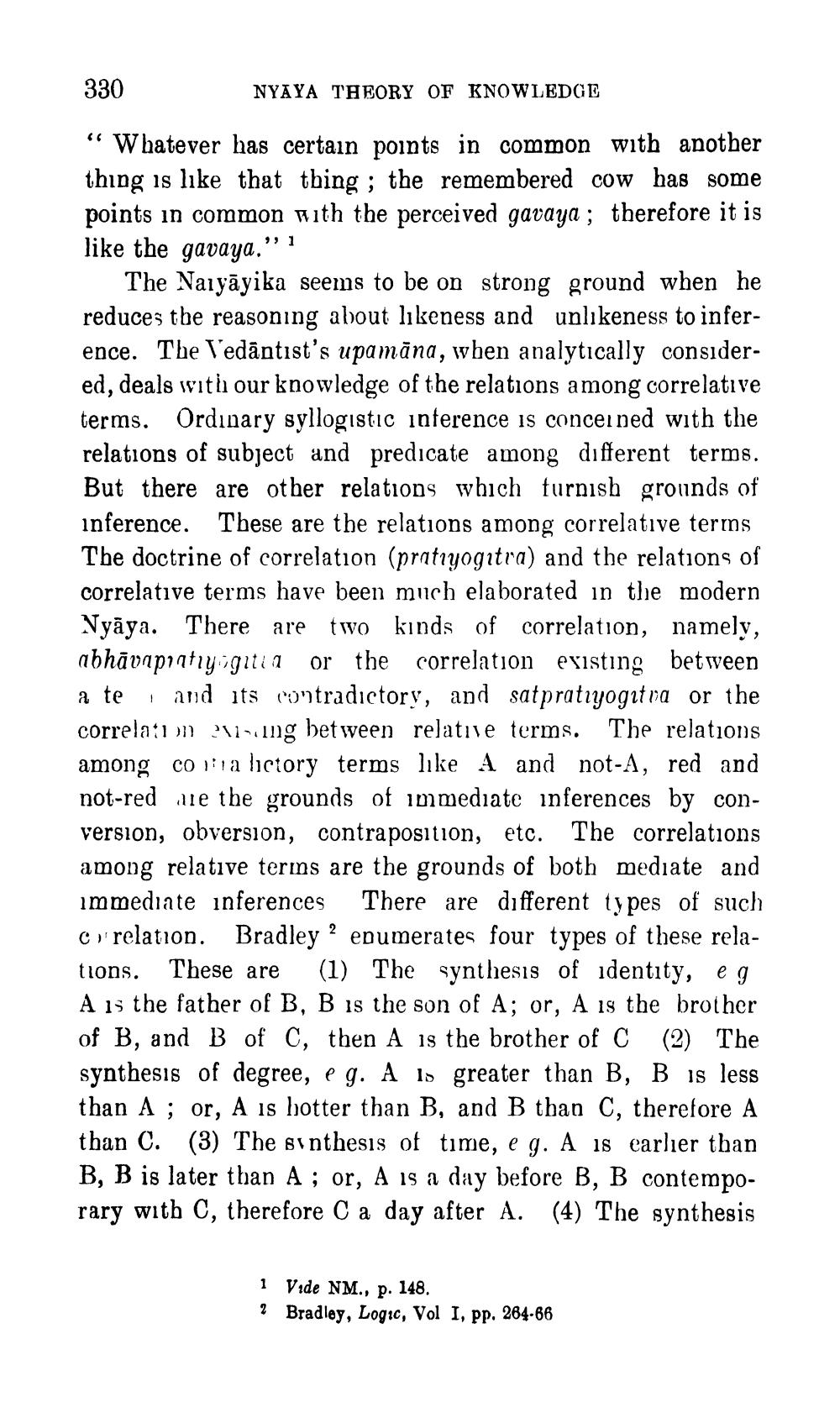________________
330
NYAYA THEORY OF KNOWLEDGE
“Whatever has certain points in common with another thing is like that thing; the remembered cow has some points in common with the perceived gavaya; therefore it is like the gavaya."
The Naiyāyika seems to be on strong ground when he reduces the reasoning about likeness and unlikeness to inference. The Vedāntist's upamāna, when analytically considered, deals with our knowledge of the relations among correlative terms. Ordinary syllogistic interence is concerned with the relations of subject and predicate among different terms. But there are other relations which furnish grounds of inference. These are the relations among correlative terms The doctrine of correlation (pratiyogitra) and the relations of correlative terms have been much elaborated in the modern Vyāya. There are two kinds of correlation, namely, abhāvapratiyogitia or the correlation existing between a te 1 and its contradictory, and satpratiyogitra or the correlatin ?11-ng between relative terms. The relations among colla lictory terms like A and not-A, red and not-red we the grounds of immediate inferences by conversion, obversion, contraposition, etc. The correlations among relative terms are the grounds of both mediate and immediate inferences There are different types of such c relation. Bradley ? enumerates four types of these relations. These are (1) The synthesis of identity, eg A is the father of B, B is the son of A; or, A is the brother of B, and B of C, then A is the brother of C (2) The synthesis of degree, eg. A lo greater than B, B is less than A ; or, A is hotter than B, and B than C, therefore A than C. (3) The synthesis of time, eg. A is earlier than B, B is later than A ; or, A is a day before B, B contemporary with C, therefore C a day after A. (4) The synthesis
1 Vide NM., p. 148. 2 Bradley, Logic, Vol I, pp. 264.66




